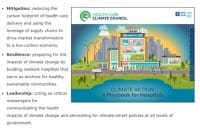Telephone triage has increased in popularity due to the pandemic. Patients preferred an alternative to visiting an urgent care, physician office or the hospital. The use of telephone triage has been used by patients to simply ask general questions, review physician orders, receive assistance with outpatient care, order supplies and to have new or worse symptoms triaged. According to the California Board of Registered Nursing, “Callers describe activities that involve interviewing and assessing the condition of the patient and determining the appropriate intervention. The intervention may be counseling the patient to administer self-care at home, advising the patient to go immediately to an urgent care or emergency room setting, or utilizing a protocol (standardized procedure) to advise the client of a specific treatment or to generate a predetermined prescription for the patient.”
Telephone triage assists with mitigating overcrowding in local urgent care and/or emergency rooms especially when a department or hospital is understaffed and a patient may not need a necessary trip to the emergency department after hours. During the pandemic, most hospitals implemented a Code Census due to the overcrowding as patients continuously were entering emergency rooms at a rapid rate. Patients also felt anxious entering emergency rooms as they were concerned they would be exposed to COVID 19. Unfortunately, patients experiencing stroke symptoms and chest pain were hesitant to visit emergency rooms or call 911 therefore opting to use telephone triage.
As patients use telephone triage, it is significant for the RN to identify the reason for the call and to listen to the patient voice to recognize if the patient can articulate. As a telephone triage nurse, utilizing the electronic medical record to also quickly review the patient’s Dx , Hx, medications, vital signs from a recent office visit, physician notes, discharge orders to understand the patients baseline within a rapid reasonable time frame. However, if a stroke is immediately suspected, the triage nurse needs to quickly intervene to initiate a call to emergency services. According to Watkins CL, Jones SP, Leathley MJ, et al. (2014), “Emergency medical dispatchers (EMDs) should be aware that callers are likely to describe loss of function (e.g. unable to grip) rather than symptoms (e.g. weakness) and that callers using the word ‘stroke’ or describing facial weakness, limb weakness or speech problems are likely to be calling about a stroke. Ambiguities and contradictions in dialogue about consciousness level arise during ambulance calls for suspected and confirmed stroke.”
For example, a patient may call to report a severe headache however the expertise of the telephone triage nurse requires to utilize their best nursing judgment and knowledge to assess the patient for neuro deficits that may correlate with symptoms of a stroke instead of assuming the patient has a tension headache due to “stress, lack of sleep, fatigue, hunger, caffeine withdrawal” as mentioned in Harvard Health Publishing in February 3, 2021. The California Board of Registered Nursing also stated, “it is incumbent upon the RN to be knowledgeable and competent in the practice when offering telephonic assessment, evaluation, referral, or advice to patients or their family members.” If suspicious for stroke, symptoms can present as sudden weakness or numbness on one side of the body, in the face, arm or leg, sudden confusion, difficulty speaking, trouble seeing, trouble walking, dizziness, loss of balance, lack of coordination or acute severe headache according to the CDC.
As the patient is speaking, slurred speech is heard. A quick review of the electronic medical record to review any pertinent diagnosis or chronic symptoms. The slurred speech is acute. Notes from an internal medicine physician with a diagnosis of hypertension is listed in the electronic medical record however stroke, aphasia or dysarthria (speech disorder) is not listed under the patient medical history. Identifying the reason for call and acute symptom will empower the nurse to select the correct protocol. Triage Logic 2022 states, “More than 96% of nurse triage call centers around the USA use the Schmitt-Thompson protocols. Once the nurse selects the appropriate protocol, the corresponding checklist leads them through a series of questions that are designed to assess the severity of the symptom that the patient is experiencing.”
Utilizing good nursing judgment by quickly identifying acute slurred speech with the patient complaint of a severe headache would be sufficient information for the triage nurse to instruct the patient to hang up and call 911 along with the nurse calling Emergency Medical Services for the patient. Penn Medicine (2022) advises, “Time is critical if someone is having a stroke. The longer a stroke goes untreated, the more damage can be done — possibly permanently — to the brain.”
“If you suspect you or someone you’re with is having a stroke, don’t hesitate to call 911,” Dr. Humbert says. “It could save a life.”
If the patient is alone, the telephone triage nurse can also confirm the patient address in the electronic medical record and confirm with the patient their exact location. The telephone triage nurse can assist to expedite care to the patient experiencing symptoms of a stroke by calling Emergency Medical Services to the patient home. According to the Centers for Disease Control and Prevention, “During a stroke, every minute counts! Stroke is a leading cause of death in the United States and is a major cause of serious disability for adults. Getting fast treatment is important to preventing death and disability from stroke.”
However, if the triage nurse does not perceive a stroke with the patient reporting a severe headache and slurred speech then the triage nurse might ask more questions and this is why it is imperative nurses are competent with recognizing emergent symptoms of stroke. Moreover, if the patient is truly experiencing a stroke this can delay care. Penn Medicine states (2022), The American Heart Association/American Stroke Association notes that a sudden severe headache that does not appear to be triggered by anything is another potential sign that you might be having a stroke.
According to Geiger 2021, the acronym BE FAST is used as a reminder to remember stroke symptoms. The American Stroke Association, recommends to call 911 when spotting a stroke using F.A.S.T.
F = Face Drooping – Does one side of the face droop or is it numb? Ask the person to smile. Is the person’s smile uneven?
A = Arm Weakness – Is one arm weak or numb? Ask the person to raise both arms. Does one arm drift downward?
S = Speech Difficulty – Is speech slurred?
T = Time to call 911.
There are limitations with telehealth as the triage nurse may not have the resources to view the assessment for facial droopiness, one arm drifting downward, therefore information collected from the patient or family is sufficient due to the risks of delaying care.
According to Penn Medicine (2022), “If you do observe any symptoms, you should call 911 immediately. You should also immediately tell the 911 dispatcher, ‘I think I’m having a stroke’ or ‘I think my loved one is.’”
In conclusion, telephone triage nurses should stay up to date with CEU’s focusing on telephone triage along with emergency signs and symptoms. Telephone triage nurses need to recognize when to dispatch 911 to the scene. Telephone triage nurses need to follow the written policies and protocols in their institution, utilize nursing judgment along with critical thinking, practice within the realm of telephone triage nursing per the Board of Registered Nursing and in “accordance with the laws of the jurisdiction in which the care is rendered” as stated by the doctors, (2020). “As with any policy, the failure to follow a policy may be viewed as evidence of breach of the standard of care in many jurisdictions” as stated by RELIAS Media, (2010).
In addition to triaging calls, patients who are stable and reporting non urgent symptoms who have received instructions from the physician, triage nurses should “end all calls by providing patient instructions on when to call back or seek emergency care if symptoms worsen or persist, as mentioned in the doctors.” (August 2020). The California Board of Registered Nursing (2011) states, “The intervention may be counseling the patient to administer self-care at home, advising the patient to go immediately to an urgent care or emergency room setting, or utilizing a protocol (standardized procedure) to advise the client of a specific treatment or to generate a predetermined prescription for the patient.”
References
American Heart Association. Stroke symptoms. 2022. https://www.stroke.org/en/about-stroke/stroke-symptoms.
California Board of Registered Nursing. RN Tele-Nursing and Telephone Triage. January 2011. https://www.rn.ca.gov/pdfs/regulations/npr-b-35.pdf
Centers for Disease Control and Prevention. About Stroke. March 8, 2022. https://www.cdc.gov/stroke/signs_symptoms.htm
Doctors. Telephone triage and medical advice protocols. August 2020. https://www.thedoctors.com/articles/telephone-triage-and-medical-advice-protocols/
Geiger, Debbe. September 23, 2021. Know the signs of stroke-BE FAST. https://www.dukehealth.org/blog/know-signs-of-stroke-be-fast
Harvard Health Publishing. Causes of common headaches. February 3, 2021. https://www.health.harvard.edu/staying-healthy/causes-of-headaches
Humbert, Kelly. (2022, March 24). If someone is having a stroke: 3 things to do and 3 things not to do. Penn Medicine: Neuroscience blog. https://www.pennmedicine.org/updates/blogs/neuroscience-blog/2022/march/what-to-do-if-someone-is-having-a-stroke
Relias Media. Does a patient callback system prevent ED suits? January 1, 2010. https://www.reliasmedia.com/articles/17775-does-a-patient-callback-system-prevent-ed-suits
Triage Logic. What are nurse triage protocols? August 2019. https://triagelogic.com/what-are-nurse-triage-protocols/#:~:text=Most%20triage%20nurses%20use%20the,for%20pediatric%20and%20adult%20patients.
Watkins CL, Jones SP, Leathley MJ, et al. Emergency Stroke Calls: Obtaining Rapid Telephone Triage (ESCORTT) – a programme of research to facilitate recognition of stroke by emergency medical dispatchers. Southampton (UK): NIHR Journals Library; 2014 Feb. (Programme Grants for Applied Research, No. 2.1.) Available from: https://www.ncbi.nlm.nih.gov/books/NBK262723/ doi: 10.3310/pgfar02010



















1 Comment. Leave new
Great article. In addition to outlining symptoms using the acronym FAST, it would be helpful to add BE
1. B – Balance 2: E – Eyes – Loss of vision, vision changes, (blurring, dimming, etc.), to help catch posterior circulation strokes.